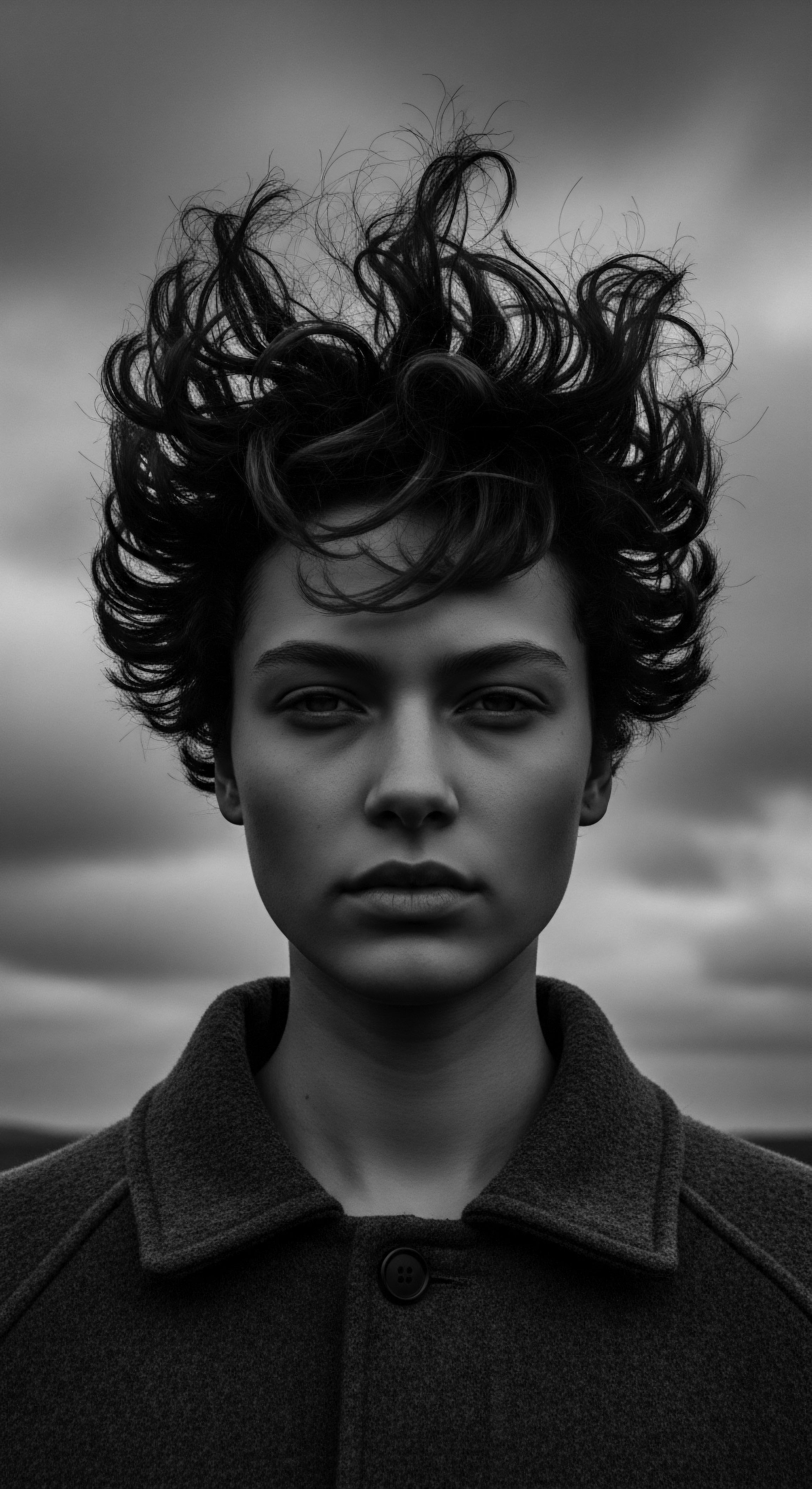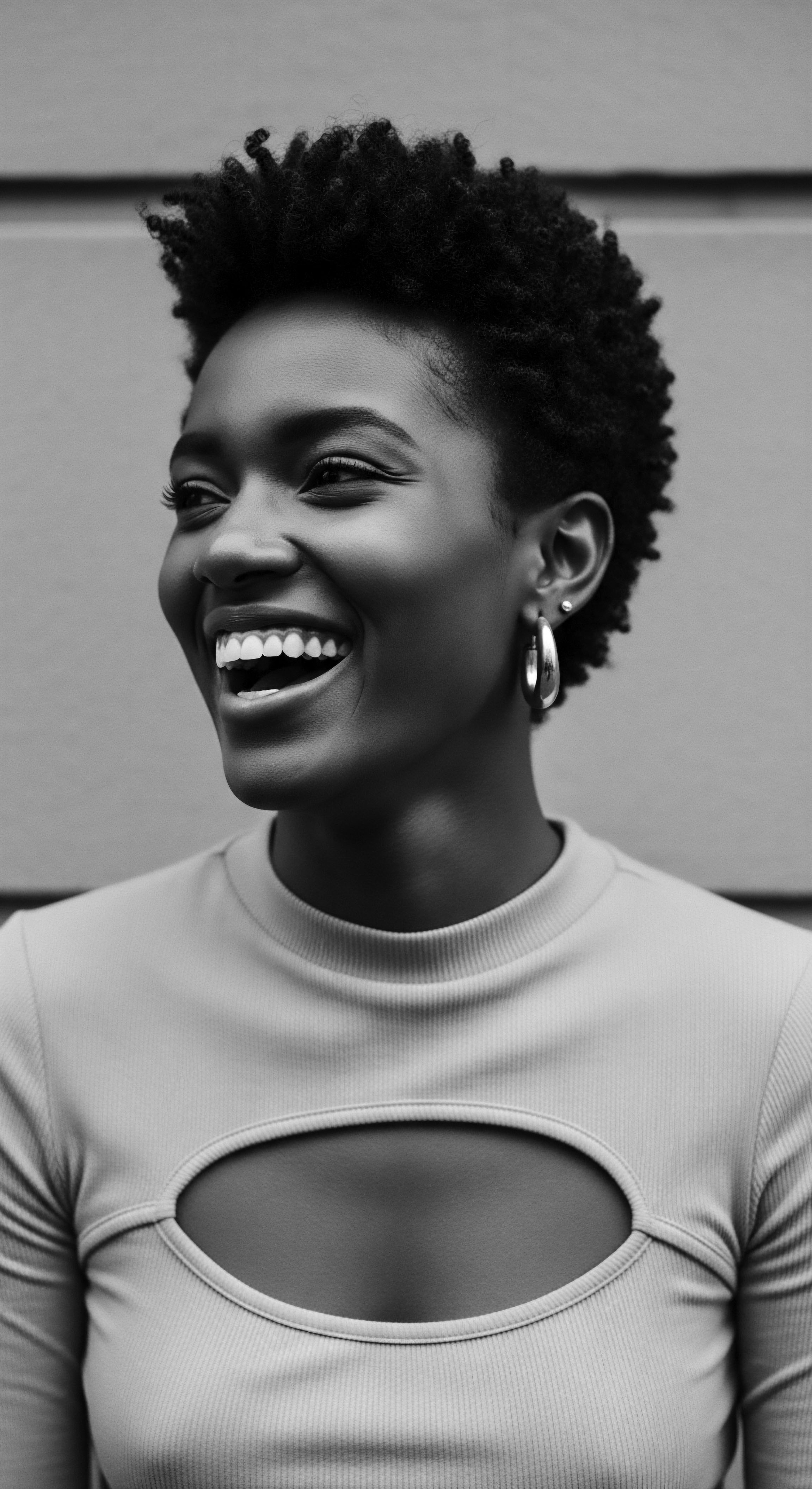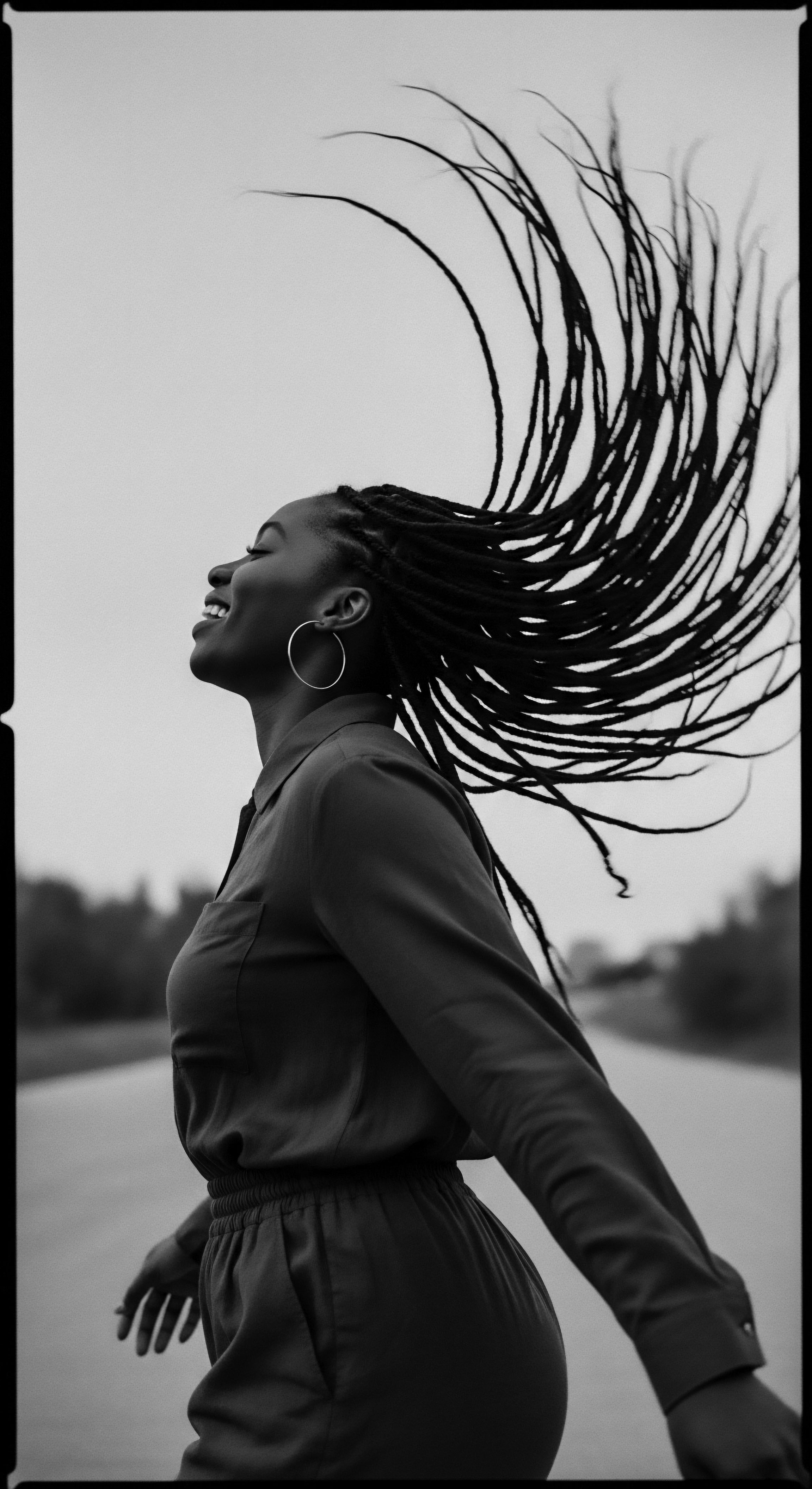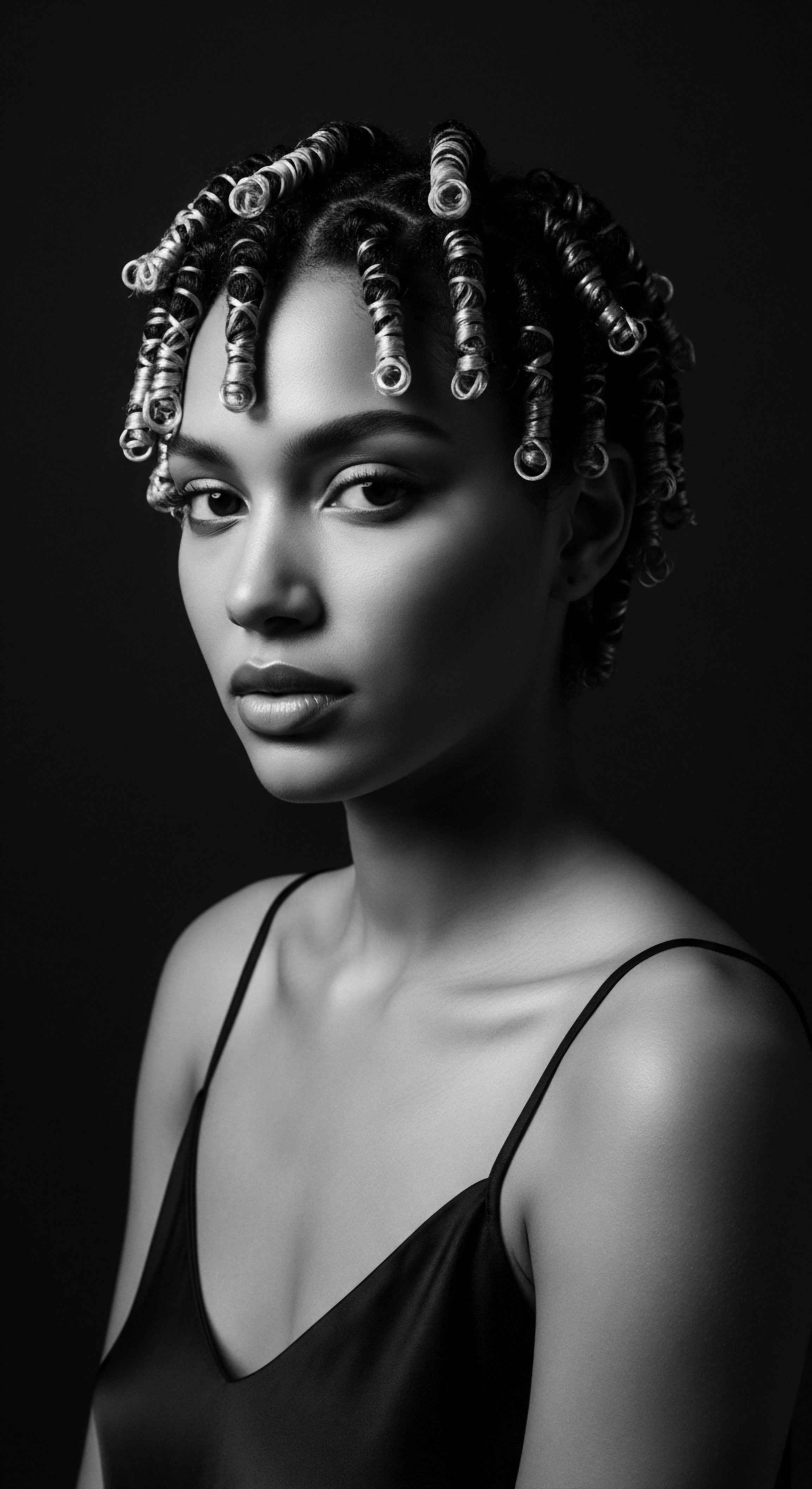
Roots
To journey into the heart of textured hair is to trace ancestral lines etched not only in our DNA but in the very rituals of care passed through generations. We speak of hair as a living archive, each coil and strand a testament to resilience, wisdom, and an intimate connection with the earth. How did our foremothers, those keepers of the strands, shield their crowning glory from the sun’s relentless kiss, the dry winds that sought to steal moisture, or the heat born of everyday living and rudimentary styling? The answer lies in historical oils, potent elixirs drawn from nature’s deep well, their efficacy validated by centuries of lived experience long before modern science articulated their mechanisms.
The origins of textured hair, particularly afro-textured varieties, are intertwined with the planet’s most intense climates. Evolutionary biologists propose that tightly coiled hair served as an adaptive shield for early humans, reducing direct solar radiation on the scalp and minimizing the need for sweat to regulate body temperature. (Lasisi et al.
2023) This innate protective quality of the hair structure itself laid the groundwork for care practices designed to support and amplify its natural defenses. These early care regimens, therefore, were less about altering texture and more about preserving the inherent vitality of the hair in demanding environments.

The Hair’s Ancient Shield
Consider the anatomy of textured hair, often characterized by its unique elliptical follicle shape, which creates the distinctive spiral and curl patterns. This structure, while providing a natural buffer against the elements, also presents a predisposition to dryness due to the difficulty of natural oils (sebum) traveling down the coiled shaft. Ancestral communities, acutely attuned to their environments and the needs of their bodies, understood this intrinsic characteristic. Their solutions were not accidental; they were born of observation, inherited knowledge, and a profound respect for the plant world around them.
For millennia, communities across Africa, parts of Asia, and indigenous peoples worldwide relied on botanical gifts to safeguard their hair. These plant-derived oils and butters were the first line of defense, serving multiple purposes beyond mere aesthetics. They sealed in moisture, softened strands, provided slip for detangling, and formed a physical barrier against environmental stressors that could mimic the damaging effects of heat.

What Properties Did Historical Oils Possess?
The effectiveness of these historical oils stemmed from their specific compositions. Many contained fatty acids that could penetrate the hair shaft, reinforcing its structure from within, or create a protective layer on the surface. They offered a spectrum of benefits, from nourishing the scalp to enhancing the hair’s suppleness.
Ancestral hair care, particularly the use of natural oils, represents a profound connection to earth wisdom and the inherent protective qualities of textured hair.
- Shea Butter (Vitellaria paradoxa) ❉ A cornerstone in West African traditions, this rich butter provided deep moisture and a protective barrier against sun and dry heat.
- Coconut Oil (Cocos nucifera) ❉ A staple in Ayurvedic practices and various tropical regions, its lauric acid content allowed it to penetrate the hair shaft, reducing protein loss.
- Castor Oil (Ricinus communis) ❉ Utilized across ancient Egypt, India, and African communities, it was prized for its thickening and moisturizing qualities, often warmed for scalp massages.
- Olive Oil (Olea europaea) ❉ Cherished in Mediterranean cultures, this oil, rich in antioxidants and Vitamin E, nourished the scalp and enhanced hair strength.
- Jojoba Oil (Simmondsia chinensis) ❉ Resembling the scalp’s natural sebum, this oil was used by Indigenous cultures for scalp balance and moisture.
- Sesame Oil (Sesamum indicum) ❉ Widely used in Ayurvedic hair care, it warmed and conditioned the hair, promoting scalp circulation.
This intentional selection and application of oils speak to an intricate understanding of hair biology and its interaction with the environment, passed down through the oral traditions and tactile instruction of elders. It was a science without laboratories, a wisdom honed by generations observing the rhythms of nature and the resilience of hair.

Ritual
The application of oils to textured hair throughout history extended far beyond a mere cosmetic act; it was a ritual steeped in community, identity, and the practical demands of daily life. These practices were not isolated incidents but integrated deeply into the fabric of cultures, shaping how individuals interacted with their hair and each other. The very act of oiling became a tender exchange, a moment of connection that fortified not just the hair strands but familial and communal bonds.
In many African societies, hair care was a communal activity, a time for mothers, daughters, and friends to gather, braiding hair and sharing stories. The oils and butters used in these sessions were central to the process, lubricating the hair for easier manipulation into protective styles that inherently shielded the hair from the elements. These styles, such as cornrows, Fulani braids, and Bantu knots, had origins deeply embedded in African history, often conveying social status, age, or tribal affiliation. The oils facilitated the creation and longevity of these styles, offering a practical benefit that married seamlessly with cultural expression.

How Did Traditional Styling Integrate Oil Usage?
Historically, styling was often a form of protective care. Hair that was braided, twisted, or coiled close to the scalp was less exposed to direct sun, wind, and friction. Oils played a vital role in preparing the hair for these styles and maintaining their integrity. For instance, in West African traditions, oils and butters were routinely applied to keep hair moisturized in hot, dry climates, working in concert with protective styles to help maintain length and health.
The application was deliberate. Oils were massaged into the scalp, drawing from Ayurvedic traditions where practices like ‘shiro abhyanga’ date back over 5,000 years, aiming to balance energies and promote well-being alongside hair health. This massage increased circulation to the scalp, a foundational element for healthy hair growth, while the oil itself provided a soothing, conditioning effect. The oil formed a subtle, conditioning barrier.
Oiling hair was more than application; it was a sacred, communal ritual, intertwining protection with cultural narrative and shared wisdom.
Beyond environmental protection, historical oils prepared hair for various manipulations that, while not always involving external heat, could cause mechanical stress. Detangling, for example, a necessary step for textured hair prone to tangling, was made gentler with the lubrication provided by oils. This preventative approach mitigated breakage and preserved hair integrity over time.

Were Oils Used During Thermal Treatments?
While modern heat styling tools like flat irons are a relatively recent invention, some forms of thermal treatment have historical precedents. For example, Assyrian monarchs and nobility around 1500 BC curled their hair with iron bars heated in fire. In the context of Black hair in America, the hot comb, patented by Madame C.J. Walker during the Reconstruction Era, became a tool for straightening textured hair, often heated to high temperatures.
While chemical relaxers also gained popularity, hair oils and fats were historically used in attempts to smooth and straighten hair. Enslaved women, seeking to align with Eurocentric beauty standards, would slather their hair with substances like butter, bacon fat, or goose grease before using heated butter knives to straighten their hair. These practices, while attempting to alter texture, demonstrate an early understanding of how a fatty layer could interact with heat, even if the results were often damaging due to extreme temperatures and harsh methods.
These historical thermal applications were often crude and potentially harmful, highlighting a distinction. The traditional use of oils was primarily for conditioning, protection from the elements, and enhancing natural styles, rather than as a direct heat protectant in the modern sense of extreme thermal styling. The oils’ role shifted from nourishing hair in its natural state to attempting to mitigate damage from forced alteration.

Relay
The legacy of historical oils for textured hair, particularly those used for environmental safeguarding, continues to resonate in contemporary hair care, offering a profound relay of ancestral wisdom into modern practices. This enduring heritage is not static; it evolves, intertwining ancient understanding with scientific validation. The traditional regimens, once passed down through observation and oral instruction, now find their efficacy explained by molecular biology, bridging the chasm between time-honored custom and scientific inquiry. This continuity underscores the enduring ingenuity of those who came before us.
Consider the shift in focus. While our ancestors contended primarily with the sun’s scorching rays and drying winds, modern life introduces a new array of heat challenges—hair dryers, curling irons, and flat irons. Yet, the foundational principle remains ❉ a need for a protective barrier, a means to seal in moisture and preserve the hair’s structural integrity. This is where the ancient wisdom of oils provides a powerful framework.

How do Ancient Practices Align with Modern Hair Science?
Many historical oils, once chosen for their perceived benefits and sensory qualities, are now recognized for specific biochemical properties. For example, Coconut Oil, with its high concentration of lauric acid, can penetrate the hair shaft, reducing protein loss and preventing damage. This deep penetration makes it particularly valuable for textured hair, which is inherently prone to protein loss and breakage due to its unique cuticle structure and coiling patterns. Similarly, Argan Oil, rich in antioxidants and fatty acids, improves hair elasticity and shine, providing a defense against environmental stressors.
The concept of “heat protection” has also expanded. Beyond guarding against direct thermal tools, it includes environmental protection—from UV radiation and humidity that can lead to frizz and breakage. Red palm oil, used in Central and West Africa, was traditionally applied to skin and hair for protection from sun exposure, a benefit now linked to its high beta-carotene and antioxidant content. This historical use aligns with contemporary understanding of antioxidants’ role in mitigating damage from free radicals generated by UV exposure.

What Specific Oils Show Protective Qualities?
The efficacy of certain oils against heat, whether from the sun or styling tools, is increasingly explored through modern research, validating centuries of empirical observation. The protective qualities are often linked to their ability to create a barrier, lubricate the cuticle, or deeply condition the hair.
| Historical Oil Coconut Oil |
| Ancestral Use Moisture retention, protein loss prevention, ancestral hair rituals in South Asia. |
| Modern Scientific Link to Heat Protection Low molecular weight and lauric acid allow deep penetration, reducing hygral fatigue and protein loss during heat exposure. |
| Historical Oil Shea Butter |
| Ancestral Use Skin and hair moisturizer, sun protection in West Africa. |
| Modern Scientific Link to Heat Protection Forms a lipid barrier on hair surface, reducing moisture evaporation and providing some UV protection, thus guarding against indirect heat. |
| Historical Oil Castor Oil |
| Ancestral Use Hair growth, moisturizing, used in ancient Egypt and India. |
| Modern Scientific Link to Heat Protection Thick viscosity provides a coating that can shield hair from direct heat friction and seal in moisture. |
| Historical Oil Olive Oil |
| Ancestral Use Nourishment, shine, used in ancient Mediterranean cultures. |
| Modern Scientific Link to Heat Protection Rich in monounsaturated fats and antioxidants; helps improve elasticity and reduce breakage when exposed to stress, including heat. |
| Historical Oil These oils, revered across different cultures for generations, demonstrate a timeless utility in hair care, continually rediscovered and affirmed by new insights. |
The traditional hot oil treatment, a practice where warmed oil is massaged into the scalp and hair, has long been a protective and nourishing treatment for dry, brittle hair. Our forebearers heated oils from plants like coconut, almonds, and olives. This practice, far from being obsolete, remains popular today, often recommended to help with dandruff relief, reduce frizz, and increase hair strength.
A notable example illustrating the deep connection between hair texture, environment, and ancestral adaptation comes from a 2023 study by Lasisi et al. which explored the thermoregulatory benefits of different hair textures. This research, using thermal manikins and human hair wigs, showed that tightly curled hair provides the most effective protection from the sun’s radiative heat, minimizing the need to sweat to stay cool. This scientific observation lends weight to the idea that textured hair itself is an evolutionary shield, a living heritage.
The ancestral application of oils further enhanced this natural defense, creating a robust system for thermal protection and moisture retention in challenging climates. This synergy between natural hair structure and applied botanical remedies speaks volumes about the intuitive genius embedded within historical care practices.

Reflection
As we close this contemplation of historical oils and their enduring legacy for textured hair, we sense a profound continuity stretching from ancient earth-bound wisdom to the sophisticated understandings of today. The journey of these botanical protectors, from the sun-drenched savannas and humid coasts to the quiet moments of modern care, represents a heritage deeply embedded in the very soul of a strand. Our hair, particularly in its textured forms, carries within its coils the echoes of survival, cultural identity, and ingenious adaptation.
The oils, simple in their origin yet complex in their chemistry, were not merely substances applied to hair. They were conduits of ancestral knowledge, expressions of care within families and communities, and tangible links to the natural world. They spoke a language of nourishment, resilience, and beauty, whispered from generation to generation. Each application was a quiet reaffirmation of identity, a defiant act of self-preservation in the face of environmental rigors and, later, societal pressures.
This journey through time reveals that the concerns about heat protection for textured hair are not new. They are as ancient as the sun itself, and as persistent as the human desire to honor and preserve one’s inherent beauty. The historical solutions, rooted in the plant kingdom, remind us of a holistic approach where wellness of hair was inseparable from the wellness of being. This living library of practices continues to provide inspiration, inviting us to explore, innovate, and respect the deep heritage that shapes our hair stories.

References
- Lasisi, R. et al. (2023). “Human scalp hair as a thermoregulatory adaptation”. Proceedings of the National Academy of Sciences, 120(27), e2300527120.
- Sherrow, Victoria. (2006). Encyclopedia of Hair ❉ A Cultural History. Greenwood Press.
- Bias, R. (1988). Hair ❉ The Chemical and Physical Properties. Springer.
- Charaka Samhita. (Ancient Indian Text on Ayurveda).
- Sushruta Samhita. (Ancient Indian Text on Medicine and Surgery).
- Peiss, Kathy Lee. (1998). Hope in a Jar ❉ The Making of America’s Beauty Culture. Metropolitan Books.
